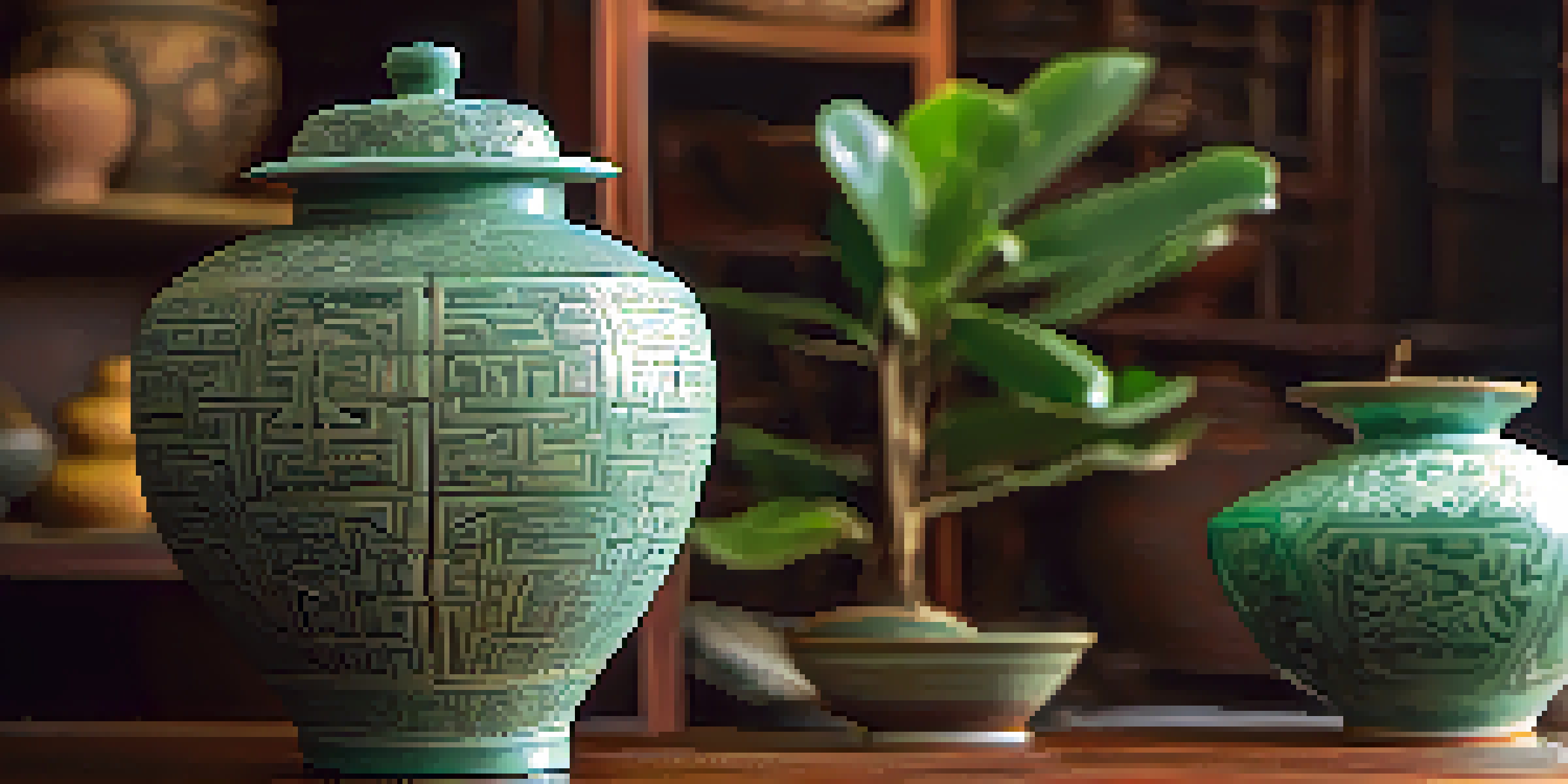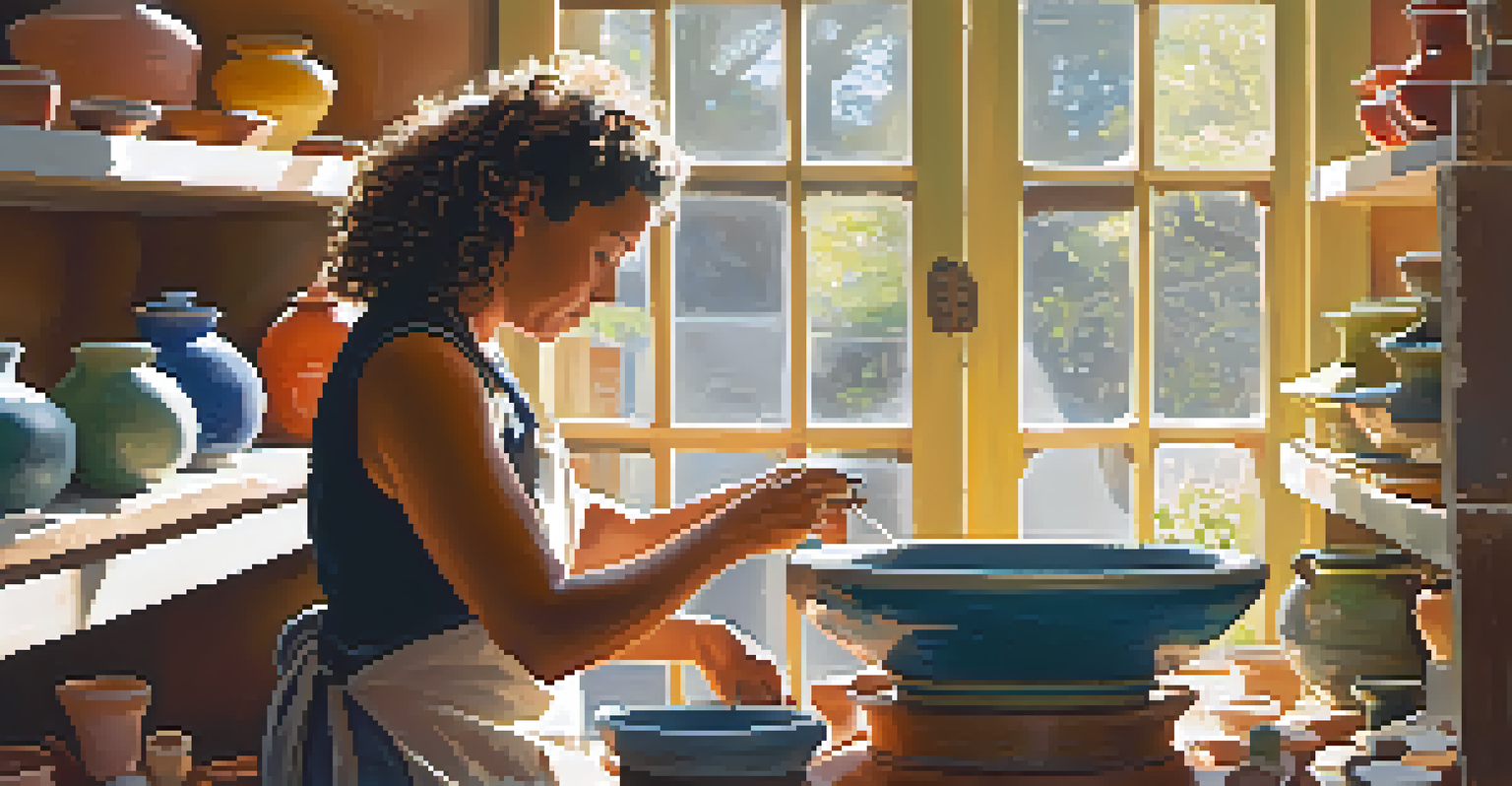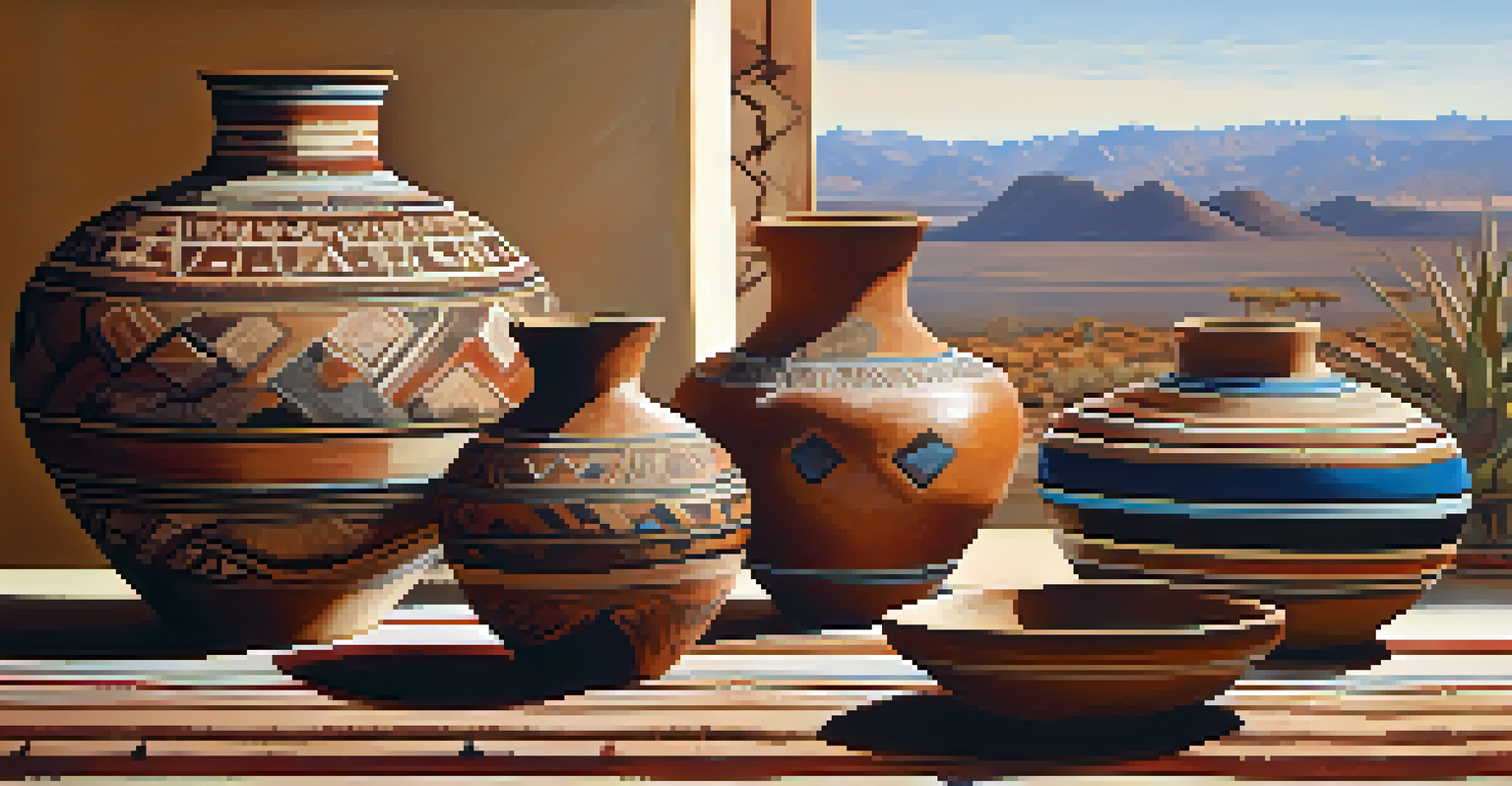The Development of Ceramics as an Artistic Medium Over Time

The Origins of Ceramics: A Historical Perspective
Ceramics trace their roots back to prehistoric times, with the earliest evidence dating around 29,000 BC. These early creations, primarily functional items like pots and tools, showcased humans' ingenuity in manipulating clay. As civilizations flourished, such as the Chinese and Mesopotamian cultures, the art of ceramics began evolving beyond mere utility, reflecting the societies' values and beliefs.
Pottery is the most human of all the arts; it is the art of transformation, the art of the everyday, the art of life.
For instance, ancient Chinese pottery, known for its delicate craftsmanship, often featured intricate designs that conveyed cultural narratives. This transformation marked the beginning of ceramics as not just a craft, but as a medium for artistic expression. It's fascinating to see how these early potters laid the groundwork for generations of artists to come.
As we delve deeper into history, we find that ceramics became a canvas for storytelling, encapsulating the essence of different eras. This melding of function and artistry set the stage for ceramics to flourish in various cultures, paving the way for more innovative techniques in the future.
The Rise of Glazing Techniques in Ceramics
The introduction of glazing techniques marked a significant turning point in the world of ceramics. Glaze not only added color and texture but also provided a protective layer, enhancing the durability of pottery. This innovation allowed artists to experiment with vibrant hues and intricate designs, transforming functional items into stunning works of art.

One notable example is the development of celadon glaze in ancient China, which produced a beautiful jade-like finish. This technique was highly sought after, influencing ceramic production across Asia and eventually reaching Europe. The impact of glazing was profound, as it expanded the creative possibilities for artists, enabling them to push the boundaries of their craft.
Ceramics as Artistic Expression
Throughout history, ceramics have evolved from functional objects to complex forms of artistic expression, reflecting cultural narratives and personal identities.
As glazing techniques evolved over the centuries, they became more sophisticated, leading to the emergence of various styles and regional specialties. This evolution not only enriched the aesthetic quality of ceramics but also solidified their status as a respected art form in its own right.
Ceramics in the Artistic Movements of the 19th Century
The 19th century was a period of significant change for ceramics, particularly with the rise of various artistic movements. The Arts and Crafts Movement, for example, emphasized traditional craftsmanship and the beauty of handmade goods, leading to a renewed interest in pottery. Artists began exploring ceramics not just as functional objects but as a medium for personal expression and artistic experimentation.
Ceramics is a universal language, a bridge between cultures that transcends time and place.
During this time, potters like Bernard Leach sought to bridge Eastern and Western techniques, blending styles to create unique pieces that reflected a global perspective. This cross-cultural exchange enriched the ceramic landscape, inspiring a generation of artists to explore new forms and techniques. The focus shifted towards aesthetics, paving the way for ceramics to be showcased in galleries and museums.
Moreover, the Industrial Revolution also played a role, as mass production techniques emerged. While this led to a proliferation of ceramics in everyday life, it also prompted a backlash from artists who valued handcrafted quality, setting the stage for the modern ceramic movement we see today.
Contemporary Ceramics: Blending Tradition with Innovation
In contemporary art, ceramics have undergone a remarkable transformation, embracing both traditional techniques and modern innovations. Artists today are not afraid to experiment with shape, form, and materials, often merging ceramics with other artistic mediums. This fusion has led to exciting new styles, pushing the boundaries of what ceramics can be.
For instance, some artists incorporate found objects or mixed media into their ceramic pieces, creating unique installations that challenge the viewer's perceptions. Others explore themes related to identity, culture, and social issues, using ceramics as a platform for storytelling. This versatility has allowed ceramics to remain relevant and dynamic in the contemporary art scene.
Sustainability in Ceramics
Contemporary ceramic artists are increasingly prioritizing eco-friendly practices, utilizing sustainable materials and techniques to reduce their environmental impact.
Furthermore, the rise of social media has provided a platform for ceramic artists to share their work and connect with audiences worldwide. This visibility has inspired a new generation of creators who are redefining ceramics as a contemporary art form, rich with potential and possibilities.
The Role of Ceramics in Cultural Identity
Ceramics play a vital role in expressing cultural identity, often reflecting the traditions and values of a community. Each region has its unique styles, techniques, and motifs that tell stories of heritage and history. For instance, Native American pottery often features intricate designs that symbolize spiritual beliefs and ancestral practices.
As artists from different backgrounds create and share their work, they contribute to a broader understanding of cultural narratives. This exchange enriches the ceramic landscape, allowing for cross-cultural influences that enhance the medium's depth. The result is a vibrant tapestry of styles that honor tradition while embracing modernity.
Moreover, ceramics have the power to foster dialogue about cultural heritage and preservation. Artists often use their craft as a means of reconnecting with their roots, ensuring that their narratives are not lost in an increasingly globalized world. This connection between ceramics and cultural identity highlights the medium's significance beyond aesthetics.
Sustainability in Ceramics: A Modern Concern
In recent years, sustainability has become a crucial focus within the ceramics community. Artists and manufacturers are increasingly aware of the environmental impact of their materials and processes. This shift has led to innovative practices, such as using recycled materials and reducing waste during production.
Many contemporary ceramic artists are committed to eco-friendly practices, sourcing clay and glazes from sustainable suppliers. By prioritizing natural materials and minimizing their carbon footprint, these artists not only contribute to environmental conservation but also inspire others in the industry to follow suit. This movement towards sustainability is reshaping the future of ceramics.
Future of Ceramics is Bright
With advancements in technology and a diverse global community, the future of ceramics is filled with innovative possibilities and evolving artistic expressions.
Furthermore, as consumers become more environmentally conscious, there's a growing demand for sustainable art. This trend encourages artists to engage in dialogue about the importance of eco-friendly practices, ensuring that ceramics remain relevant in a world increasingly focused on sustainability and ethical consumption.
The Future of Ceramics as an Artistic Medium
Looking ahead, the future of ceramics as an artistic medium is brimming with possibilities. With advancements in technology, such as 3D printing, artists are exploring new ways to create and manipulate clay. This innovation opens up exciting avenues for design, enabling the creation of complex forms that were previously unimaginable.
Additionally, the global art community continues to embrace ceramics as a vital form of expression. As artists from diverse backgrounds share their unique perspectives, the medium is enriched with fresh ideas and influences. This ongoing dialogue ensures that ceramics will evolve, remaining a dynamic and integral part of contemporary art.

Ultimately, the future of ceramics is intertwined with the creative spirit of its artists. As they push boundaries and challenge conventions, ceramics will undoubtedly continue to captivate audiences and inspire appreciation for this age-old yet ever-evolving art form.